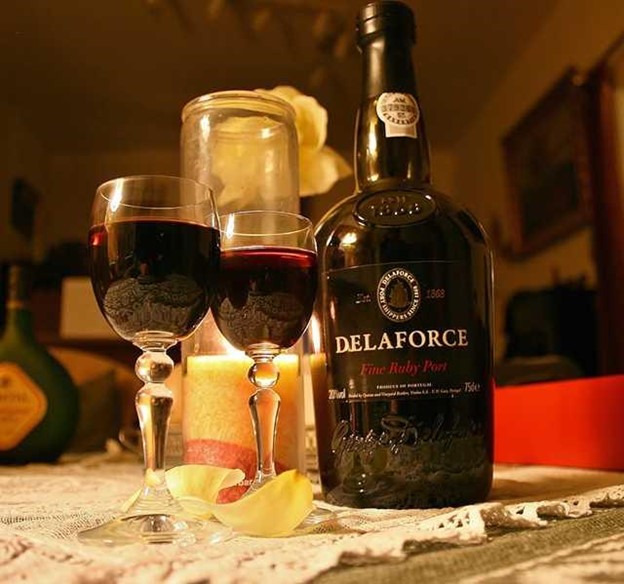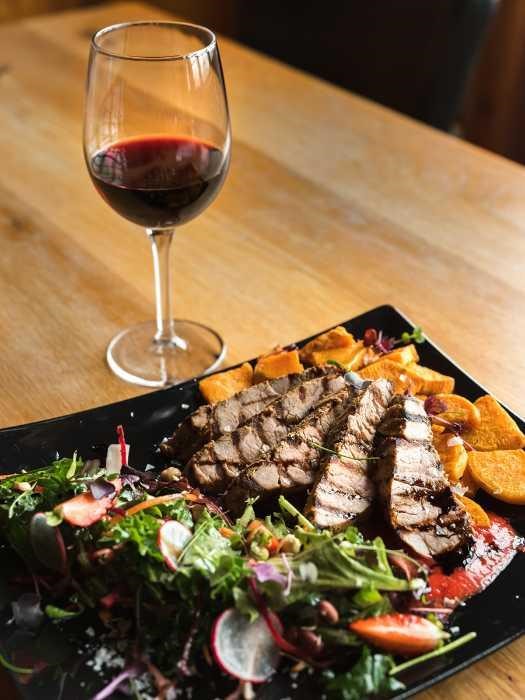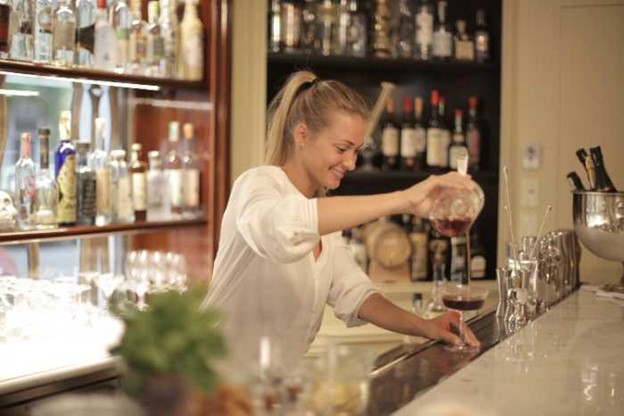What does port taste? It’s a question that has confounded wine lovers for centuries. The confusion is that different varietal grapes are used to make different types of wine. People often have difficulty discerning the flavor differences between wines from the same varietal. So, what does port taste like? Is it a sweet, earthy, and full-bodied fortified wine? Or is it sour and acidic?

The truth is, it has a combination of both characteristics depending on the quality of the port. These factors affect the quality of the port and the way it tastes. And, when it comes to the best port, it’s not merely a matter of personal preference. The best wines are produced from the best grapes and aged in the right conditions.
Traditional Port Grapes
Port is a fortified wine typically made from grape varieties like Tinta Barroca and Touriga Francesa, Touriga Nacional, and Tinta Roriz (Tempranillo). These grapes are typically grown in the Douro region of Portugal. The grapes may also blend with other grapes from other regions. The conditions under which the grapes are grown, and the time they spend aging determine the different styles of port.
Types of Port Wine
Port wine is a versatile and complex beverage, with several different types and flavors to explore. Tawny port, for example, is aged in wooden barrels, giving it a nutty flavor and amber color. This type of port is known for its smoothness and rich taste, making Tawny port a popular choice among wine enthusiasts.
On the other hand, Ruby port is characterized by its deep red color and fruity aroma. It is typically aged for a shorter period than Tawny port, resulting in a fresher and more vibrant taste. Ruby port pairs well as a dessert wine with desserts like a dark chocolate, or fruit tarts due to its sweet flavor profile.
Another interesting type of port wine is White port, which offers a refreshing alternative to traditional red ports. Made from white grape varieties, White port has notes of citrus and honey that make it perfect for summer sipping. This lighter style of port can be enjoyed on its own or mixed into cocktails for a fresh and unique twist on classic drinks.
Ruby Port
This is the most common port. The fortified wine is usually stored in stainless steel or concrete tanks to only allow reductive ageing. The port keeps its colour and is often blended to reflect the style of the port house. Ruby port is stored for 4-6 years. The wine is filtered and does not improve with age.
Reserve Port
Reserve port is a premium Ruby Port. It does not have a single vintage but is a blend of several years.
Tawny Port
Tawny Port is made from fortified red wines which are stored in wooden barrels. This allows oxidative ageing which generates nutty caramel flavors already in the wine. Tawny Port is sweet to medium dry and is served as a dessert wine in Great Britain. You can serve it with the main course, too.
Other port wines are Rose, Colheita, Garrafeira and White port wines.
Aged Tawny Port
Depending on the ageing conditions or a mix of reductive and oxidative ageing port develops a different taste. The two ageing procedures which are used are reductive ageing and oxidative ageing. For the reductive ageing the port is stored in closed steel tanks or glass cylinders. This gives the port a which is smoother and less tannic with a deep colour.
Does Tawny Port get better with age?
When you store port like Tawny Port wine in oak barrels it`s called oxidative ageing. It gets into contact with oxygen and part of the wine evaporates (angel`s share). The resulting port has a lighter colour, is more tannic and more viscous. Sometimes combinations of both methods are used.
Yes, Tawny Port gets better with age as long as it is stored in oak barrels. Once it is filled in glass bottles the oxidative ageing stops and the reductive ageing starts to give the port wine a smooth finish.

Late-Bottled Vintage (LBV) Port
The right ageing conditions for port wine give it a rich, full-bodied flavor. Additionally, the correct type of oak barrels can add a layer of complexity to the taste. These factors can help people distinguish the difference in the “taste” of port between the different styles produced by reductive and oxidative ageing.
Late Bottled Vintage (LBV) Port ages using oxidative ageing giving it a tannic, nutty flavor. The late botteling allows it to develop its characteristic aroma which is rounded once it is filled into glass bottles.
So, what does good port taste like? Is it sweet, earthy, and full-bodied? Or is it sour and acidic? The truth is, it has a combination of both characteristics depending on the quality of the port. Compared to wine it normally, vintage port tastes richer, sweeter and heavier. The different ageing methods add complexity to its flavor.
The Right Conditions for Port Wine
The right conditions for port wine include a temperature of around 55 degrees Fahrenheit / 13-14°C and relative humidity of less than 70%. Additionally, the correct type of oak barrels can add a layer of complexity to the taste of fortified wines. These factors can help people distinguish the difference in the “taste” of port between the different styles of sweet wines.
What does 50 year old Port taste like?
Old port typically has a more potent aroma and more substantial tasting wine than new port. A new port is typically less complex than an old barrel of port. It’s lighter in color and has less complexity depending on the ageing method used.

New ports typically age for two to five years.
Old port wines have a darker, less bright color. That’s because the wine`s colour loses brightness in the oxidative ageing resulting in port with a darker color. They’re also often sweeter than new port as the aroma and sweetness in old port is more concentrated due to evaporation of a part of the alcohol. Therefore old port wines typically have a more intense aroma and are more substantial tasting than new port.
How to Choose the Best Port Wine
Several factors determine the quality of the port. Additionally, the best port has a minimum age of 20 years. These factors include the type of grape used, the quality of the white wine grapes, and the conditions in which the grapes are grown.
Vintage aged fine port wines are between 20 and 30 years old are referred to as an older vintage bottle.
Alcohol Percentage: Wines with an alcohol content of at least 14% are considered a high-quality port.
The Port maker: Buying a port from a reputable seller is the best way to ensure that you’re getting the best port. Remember there is more to better wine than being an expensive wine. Follow your taste not the price tag! Vintage ports are more expensive than vintage ports but they reflect the special characteristics of the wines they and the year they were made from.
The Downside of Ruby Port Wine
There’s no denying that port wine is a delicious beverage. It can even act as an aperitif or dessert wine. However, there are some downsides to drinking port as a dessert wine. Firstly, port wines are typically high in sugar and may ovepower a sweet dessert.
That’s because the fermentation of the wine was stopped by addition of alcohol leaving a high level or residual sugar. The high sugar content of port wines can lead to weight gain, especially if you’re consuming it regularly.

Secondly, port wine is typically an acquired taste. People who don’t like port wine don’t know it even exists. If you don’t like authentic port wine, you should try drinking a different fortified wine like marsala instead. It is ideal to know how best to buy wine.
Port wine is best when chilled at room temperature. However, some people prefer serving them at a different temperature than others. For example, some people serve port in the refrigerator while others serve it at room temperature or on the stovetop.
Conclusion
Port wine is a trendy alcoholic drink. It’s also a delicious one. Several factors determine the quality of the port. If you’re looking for something new that tastes great and has a lot of health benefits, then port wine is an excellent choice for you.

